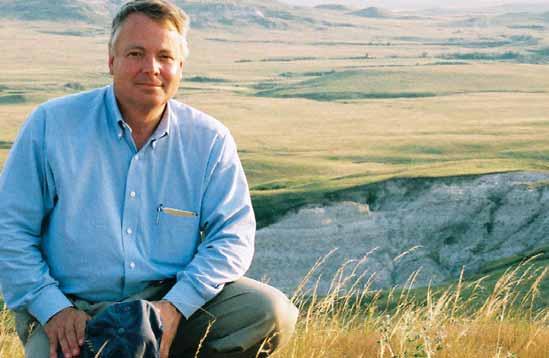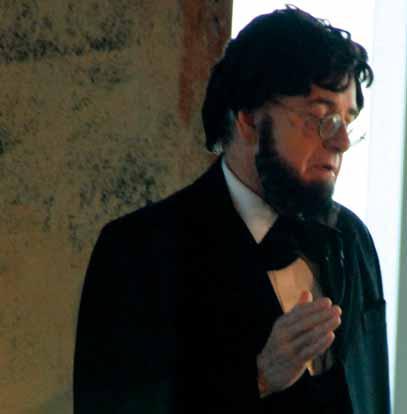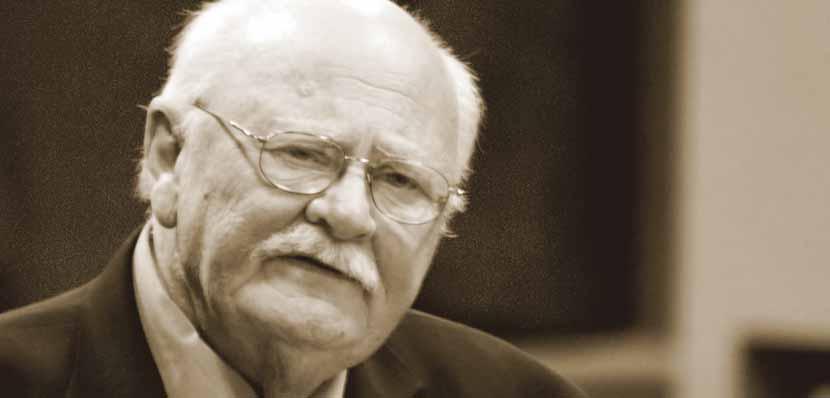[chautauqua section]
In 1854,
the political situation in Illinois was volatile. Abolitionists were outraged that Congress had given the people in the territories of Kansas and Nebraska the right to decide whether or not to allow slavery. The Know-Nothing party was demanding laws that would restrict immigration in a campaign that lauded “America for Americans.” A committee of Know-Nothings from Springfield wanted to nominate Abraham Lincoln for the Illinois legislature. Lincoln, who had already served in the U.S. Congress in 1847-49, saw this as a backward political move, and, hoping that the legislature might select him as United States senator, refused their overtures. On September 3, William A. Jayne (1826-1916), Lincoln’s physician and Know-Nothing abolitionist, disregarded his wishes and placed an ad in the Illinois State Journal that announced Lincoln’s candidacy. An angry Mary Lincoln, looking out for her husband’s political career, hurried to the newspaper’s office and demanded the withdrawal of his name. Undaunted, Jayne rushed over to Lincoln’s house to convince him to stay in the race. As Jayne recalled many years later, Lincoln was “the saddest man I ever saw—the gloomiest.” Lincoln paced back and forth on the verge of tears, laying out the reasons he could not run. Jayne refused to take no for an answer, and finally Lincoln very reluctantly gave in. Lincoln won the November election in a landslide. Sensing that the legislature might send him to Washington, Lincoln declined election. Abolitionists and Know-Nothings were furious. Dr. Jayne felt betrayed and now, in his words, everyone was “down on Lincoln— hated him.” Jayne and Lincoln remained good friends, however. In 1860, Jayne, now the mayor of Springfield, won election to the Illinois state senate, and Lincoln captured the White House. After Congress created Dakota Territory on March 2, 1861, Lincoln rewarded his good friend and physician by appointing him the first governor of Dakota Territory. As soon as the snows melted, Jayne headed west to oversee the organization of a governmental structure for the new territory.
4
Dakota Territory’s white population was small and scattered. The largest town was Yankton, with around 300 people. J. B. S. Todd, a cousin of Mrs. Lincoln, ran a trading company and controlled most businesses in town. Folks referred to Yankton as “Captain Todd’s town.” “His” town was a collection of sod and log houses; the Ash Hotel provided beds, food, and whiskey. Other settlements along the Missouri—Vermillion, Bon Homme, and Elk Point—claimed no more than a handful of residents. To the north, land speculators had lured a few dozen Minnesota people to the Sioux Falls area, and to the far north about 300 people, mostly Metis, lived around Pembina on the Canadian border. Jayne arrived in Sioux City, Iowa, in late May, rented rooms for his wife, and set out by horse and buggy for Yankton. The new governor selected Yankton as the seat of government upon the suggestion of Mrs. Lincoln, until the legislature could make an official selection. Until an adequate log house was built for the governor, he spent the first six weeks at the Ash Hotel where he had to share a bed with the attorney general. He created three judicial districts and assigned a judge to each. He divided the settled areas into legislative districts, ordered an election for September 16, and scheduled the first session for the following March. Todd won the most important elected office—the territorial delegate to the Congress. Although the delegate could not vote, the salary was good and life in Washington much superior to that in Yankton. After the September election, the appointed and the elected officials left for their homes in the East, avoiding a bleak Dakota winter. Governor Jayne and the other officials returned in March 1862 for the first legislative session. In his address to the lawmakers, he envisioned a great future for Dakota: “We have combined the pleasant, salubrious climate of southern Minnesota with the fertility of soil of central Illinois. I venture the prediction that the wheat granary of the continent will be found in the valley of the Red River.” That first session has been described as “rough-and-tumble” and “wildand-woolly.” Capital selection was the main order of business and tested the patience of Governor Jayne. The towns of Bon Homme, Vermilllion, and Yankton









